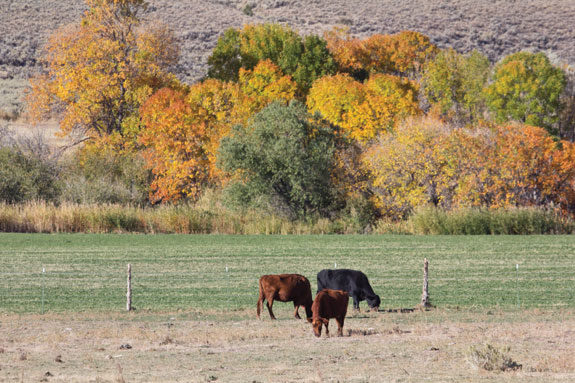1. Fertility is necessary for legume establishment and forage productivity.
Take soil tests and feed drought-stressed forages from 2012 with needed nutrients.
Remember pH, P and K is critical for getting legumes up and growing. Check recommendations for your area.
2. Step up your management of hay and pastures. Harvest for optimum quality/quantity. Increased quantity will decrease quality.
Seed production pulls water and nutrients from hay and pastures (think vegetative). Use rotational grazing management. Consider paddock size, grazing interval, harvest efficiency, stubble height for removing animals – and of course include a rest period in your grazing plan.
Adequate rest period may be the most important factor in a managed grazing program.
3. Add legumes to hay fields, legumes and forbs to grazing paddocks. Legumes and forbs are deeper-rooted and can take up more moisture than grasses even in dry conditions.
Legumes and forbs help to shade companion grasses, keeping the ground temperature a few degrees cooler. Thick stands of legumes produced fairly well in 2012 even when grasses were not growing.
Legumes will help to provide nitrogen to companion grasses, giving them a boost during dry times. Thirty to 40 percent legumes in a stand will eliminate the need for purchased nitrogen in a pasture. This can greatly reduce the cost of forages for your livestock.
4. Repair/reseed drought-damaged fields from 2012. Which pastures or hayfields need a boost? There are two methods of renovation that allow interseeding legumes and/or more productive grasses into existing stands. We would prefer either of these compared to a complete renovation that destroys existing roots.
• Frost seeding, sometimes referred to as overseeding, is simply broadcasting seed onto freezing/thawing ground usually mid-February. Legumes like red clover and ladino white clover work best.
Small-seeded grasses like orchardgrass and tall fescue work well. Do not apply nitrogen fertilizer on frost-seeded legumes. Nitrogen will cause grasses to outgrow legumes and choke them out.
Controlled grazing is critical prior to and following frost seeding. Fall grazing reduces grass competition in the spring. Timely spring gazing allows sunlight penetration for legume development.
Don’t graze newly seeded legumes until they reach the three-leaf stage to avoid plant damage. Disadvantages to frost seeding would include less efficient seeding method requiring more seed per acre and poorer seed soil contact.
• Interseeding by no-till – Low-producing yields can be doubled or tripled with the introduction of more productive grasses and legumes.
Chemicals can be used to temporarily reduce grass competition or even kill the sod for a more rapid establishment. Soil erosion is reduced with this method. Seeding rates will vary depending upon species and mixtures selected.
Remember that you can’t thicken up an alfalfa stand with alfalfa due to autotoxicity issues. Red clover might be an option. No-till usually is started as early as March as conditions allow.
Check to see what species of grass and legumes are best suited to your forage production and farm goals. Use highly productive, persistent, perennial varieties to maximize yields and endurance, reducing the annual cost of production.
Plan to extend the grazing season in 2013 through the use of cover crops, double cropping or just trying other forage alternative forage crops that increase the grazing days in your operation.
Many livestock producers benefitted from overseeding standing corn crops in 2012, providing high-quality forage after the late-summer rains fell. FG
Dean Oswald is a certified forage and grassland professional with the American Forage and Grassland Council.









